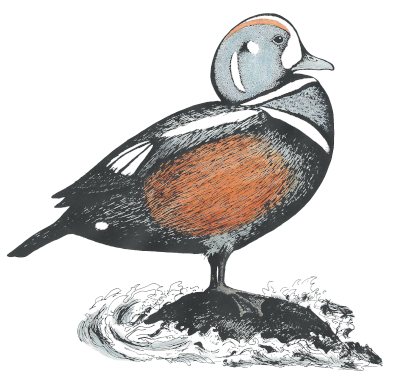
Anacardiaceae - cashew family
Leaves
Leaf type: pinnately compound
Leaf arrangement: alternate
Maine is home to 6 species in 2 genera that grow without cultivation. If you already know which species you have or are interested in learning about, click on the appropriate link below. Otherwise, examine the table below for help with identification.
Rhus (3 species)
Rhus copallinum var. aromatica - winged sumac
Rhus glabra - smooth sumac
Rhus hirta - staghorn sumac
Toxicodendron (3 species)
Toxicodendron radicans - poison-ivy
Toxicodendron rydbergii - western poison-ivy
Toxicodendron vernix - poison-sumac
| leaflet number | |
| Rhus | 11–31 |
| Toxicodendron | 3 |
Rhus (sumac)
Rhus (with a lower case “r”) was the ancient Roman name for their sumac plants.
| char. 1 | char. 2 | |
| Rhus copallinum var. aromatica | ||
| Rhus glabra | ||
| Rhus hirta |
Rhus copallinum var. aromatica (winged sumac) [information to be added]
Rhus glabra (smooth sumac) [information to be added]
Rhus hirta (staghorn sumac) is a common and easily recognizable species.


(click on an image to enlarge)
Toxicodendron (poison-ivy). This genus name comes from two words meaning “poison tree”. Toxico- is the combining form of the Latin (second declension neuter) noun toxicum (poison), which came from the Greek verb “toxeuein” (τοξευειν) “to shoot arrows” or “to shoot with a bow”. And the second part of the genus name, -dendron, is a transliteration of the Greek (second declension neuter) noun δενδρον, which means tree. (The Latin word for tree is arbor.) The poison in poison-ivy is urushiol, a compound in the sap that “binds to the skin and ultimately causes an itchy rash, the severity of which depends on the individual’s sensitivity.” (Haines, Ancestral Plants, volume 1, p. 137)
| aerial roots | |
| Toxicodendron radicans | present |
| Toxicodendron rydbergii | absent |
| Toxicodendron vernix | absent |
Toxicodendron radicans (poison-ivy) leaflets grow more or less parallel to the ground. The specific epithet, radicans, is the present participle of the 1st conjugation deponent verb radicor, -ari, -atus, which means “grow roots” or “take root”. As the present participle, it means “rooting”. So, Toxicodendron radicans is “the rooting poison tree”.
A distinguishing feature of Toxicodendron radicans is the presence of aerial rootlets (see close-up image at lower left). These rootlets enable T. radicans to climb (sometimes many feet high) on rocks and trees.


(click on an image to enlarge)
Toxicodendron rydbergii (western poison-ivy) is the more frequently encounted member of the genus on Mount Desert Island. Good examples can be found along many roadsides and carriage roads. Note the irregular dentition—entire on one side of the leaflet and coarsely and irregularly toothed on the other. This can vary from leaf to leaf on the same plant. The specific epithet, rydbergii, is the possessive form (genitive case) of the name Rydberg, in this case Per Axel Rydberg (1860–1931), the first curator of the New York Botanical Garden herbarium. So, Toxicodendron rydbergii is “the poison tree of Rydberg”. It was at one time the custom to capitalize (the first letter of) a specific epithet if the name it came from was a proper noun, but now the practice is to begin all specific epithets, no matter what their origin, with a lower case letter.

(click on image to enlarge)
Toxicodendron vernix (poison-sumac) [information to be added]